In Partnership With
- Bellingcat
- Cerosetenta
- Baudo Agencia Pública
Additional Funding
Collaborators
- The Commission for the Clarification of Truth, Coexistence and Non-Repetition of Colombia
Methodologies
Forums
Exhibitions
On the 5th of May 2021, Lucas Villa, a Colombian student, was shot and fatally wounded in Pereira, Colombia while participating in the National Strike. Our findings suggest Lucas was targeted in a coordinated assassination.
On the evening of May 5, 2021, Lucas Villa, a 37-year-old Colombian student activist, was shot several times and critically wounded during a protest at the César Gaviria Trujillo Viaduct in Pereira, Colombia. Lucas was declared brain dead 5 days after the shooting. Two other people sustained injuries.
That day, Lucas was protesting as part of a national strike against the government. Police violence has escalated dramatically since the protests in Colombia began on April 28th. According to previous research by Cerosetenta and Bellingcat, at least 63 people have been killed and hundreds more injured by police and state agents during the protests. This violence has led many to think that the police may have been involved in the killing of Lucas Villa.
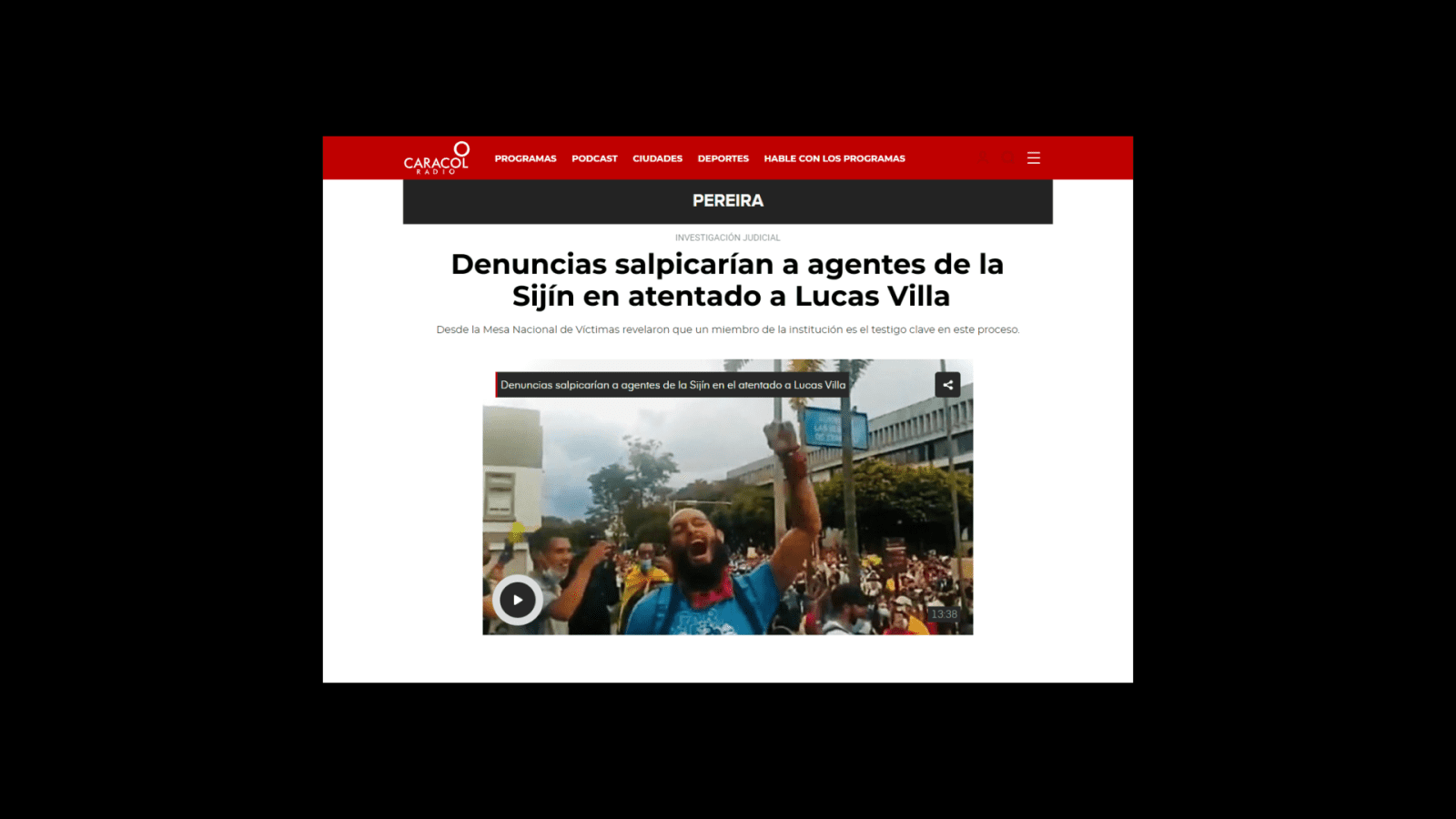
The police have denied any involvement. Instead, they stated:
‘As a hypothesis we [the police] suspect involvement from an organized criminal gang known as La Cordillera. […]
The material elements and physical evidence have not identified police officers involved in this crime.’
—Mayor General Fernando Murillo Orrego, National Police Director of Criminal Investigation, DJIN
After 7 months of silence from the police and state prosecutor’s office, essential questions are still unanswered:
- Was Lucas the victim of a targeted attack?
- Have the police and state officials adequately investigated the killing?
With the help of the Colombian Truth Commision (Comisión de la Verdad Colombia), we obtained a piece of previously unseen security footage capturing the incident in its entirety.
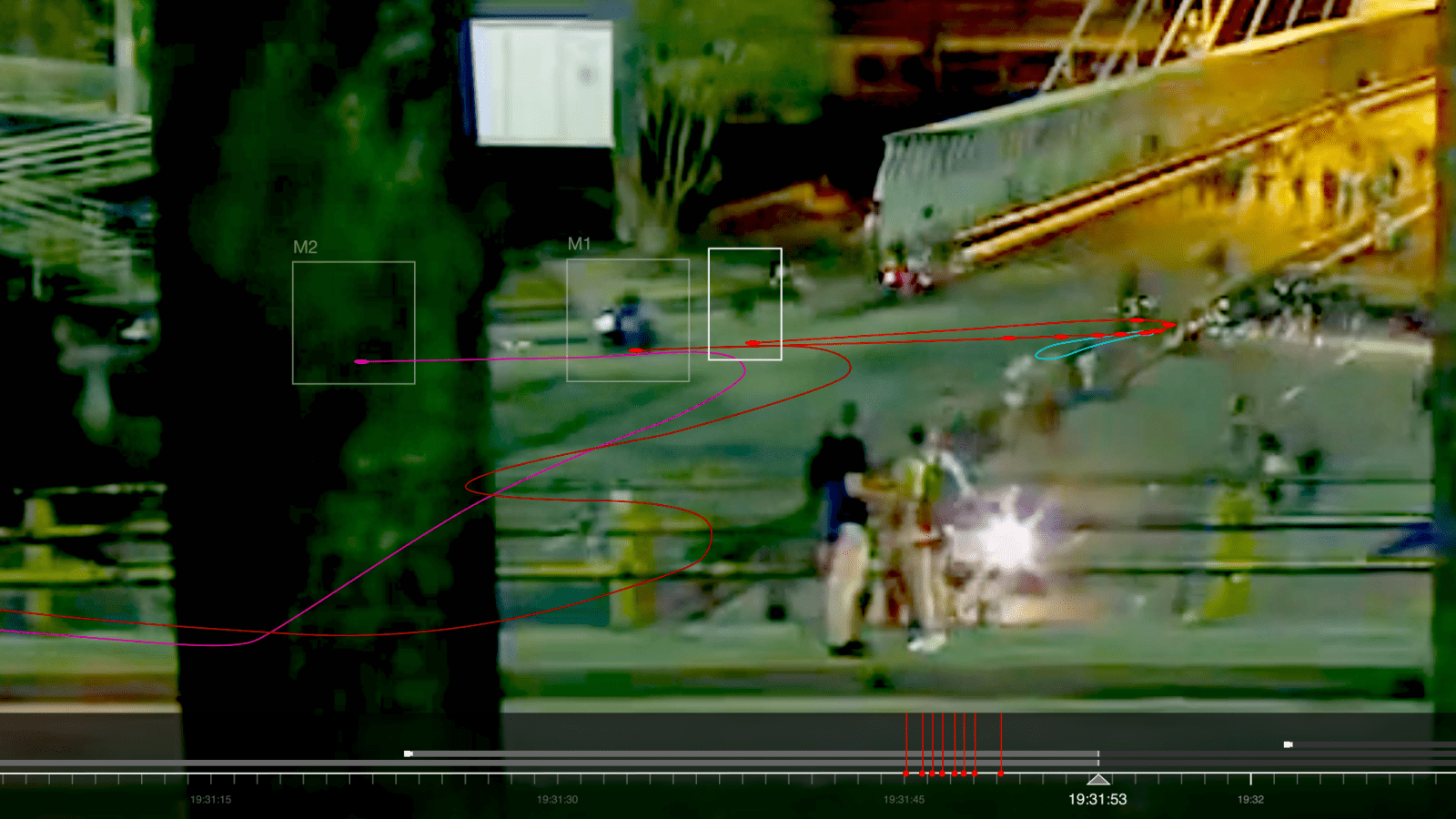
We also collected hours of testimony and audio-visual material, through open-source investigation and interviews.
Forensic Architecture, Bellingcat, Cerosetenta and Baudo Agencia Pública, analysed and synchronised the available footage and built a 3D model to reconstruct key moments from that night. Our analysis shows that:
- The gunmen likely surveilled the scene before the attack.
- The gunmen established an escape route before the attack and committed the murder with accomplices.
- The gunman moved decisively toward Lucas and fired 8 shots at close range.
- Lucas died from a shot that was likely fired within 100 cm of his head.
Our analysis and the available evidence suggest Lucas was targeted in a coordinated assassination.
A targeted killing requires intentionality and a coordinated network of actors to organise and action.
Surveillance
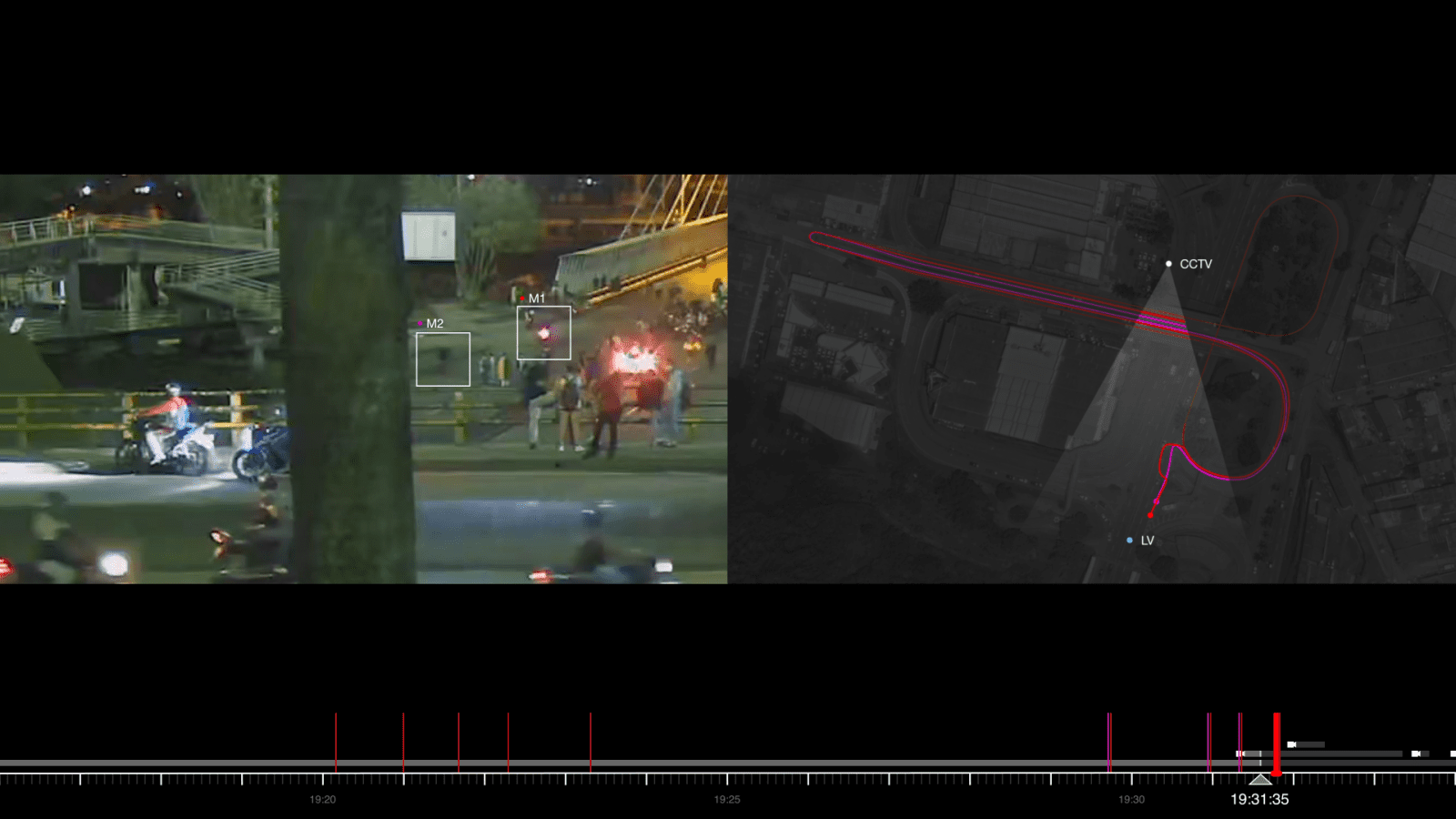
In the security footage, multiple motorbikes can be seen circling the junction in the minutes leading up to the incident. We determined this by comparing the shape, trajectories and colours of motorbikes driving on the overpass visible in the security footage.
It is likely that Motorbike 1 (M1), which the gunman was on, along with the other accomplices circled the scene at least six times before the attack. This was likely to surveil the scene beforehand. Such surveillance is consistent with coordinated assassinations.
Escape Route
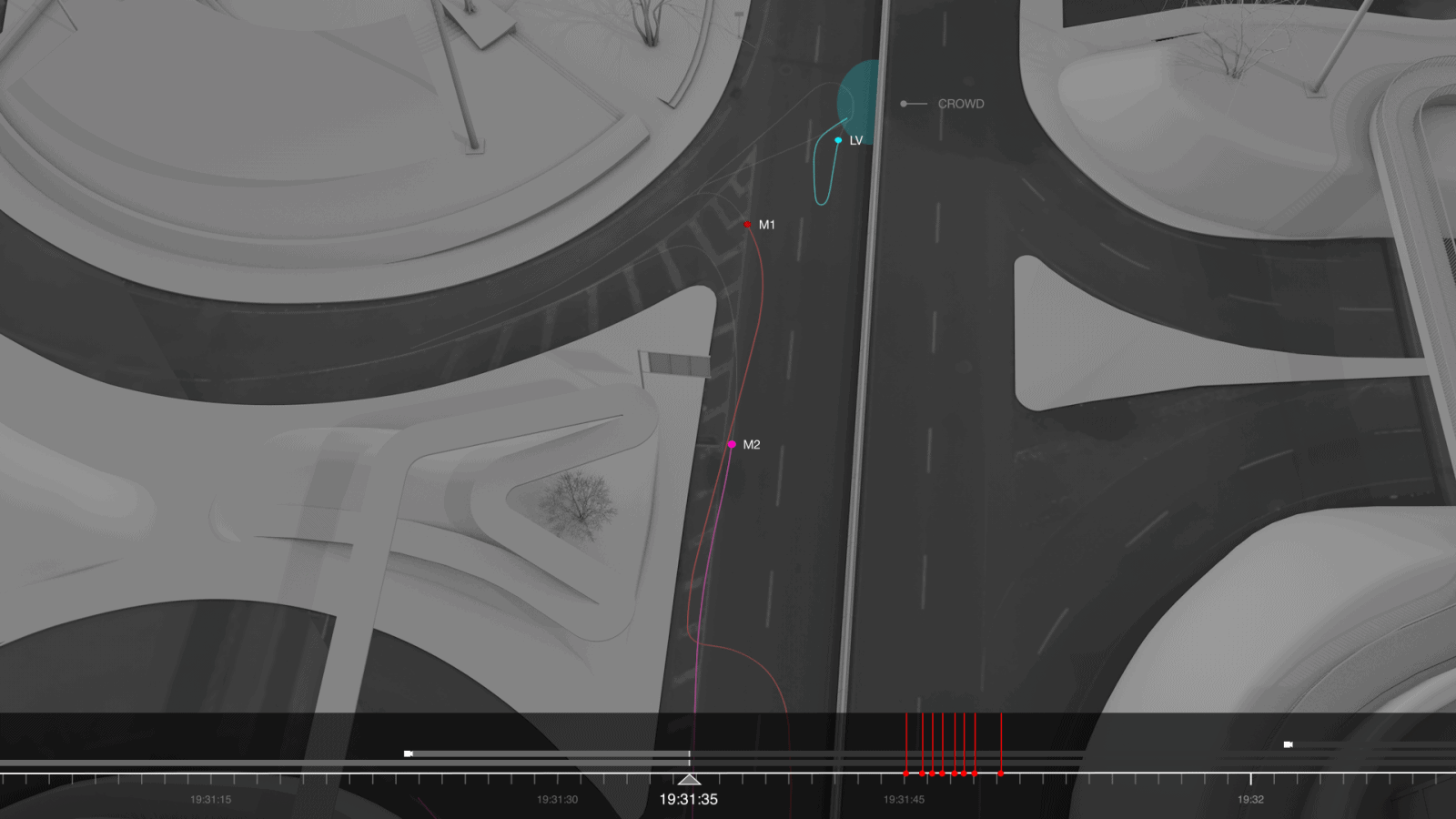
By reconstructing the full movement of Lucas and the gunmen in 3D, we were able to locate the gunman at the time of each shot in relation to Lucas’ position.
As the motorbikes approached, they meandered and slowed as if to survey the scene. The motorbike stopped 12 metres from Villa’s location and was positioned toward an exit ramp, likely as a means of escape.
Shots
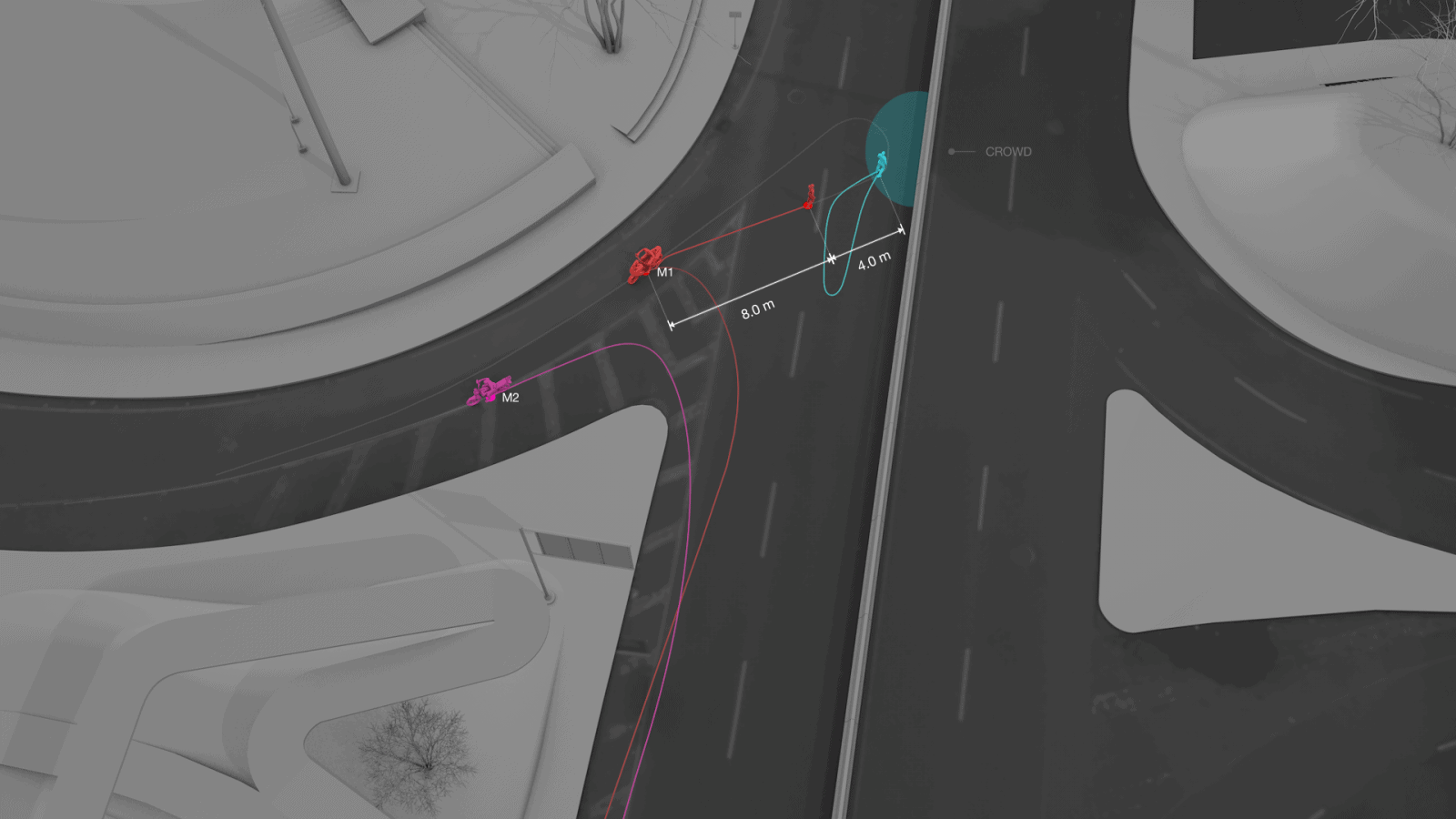
The driver remained on the motorbike while the gunman disembarked and decisively and quickly moved in a straight line toward a crowd of people where Lucas was standing.
The gunman began firing when they approached the crowd, just four metres away from Villa. They continued to shoot as they entered the crowd.
The last four shots (shots 5-8) were fired within the crowd and very close to Lucas, no further than 2.5 metres away.
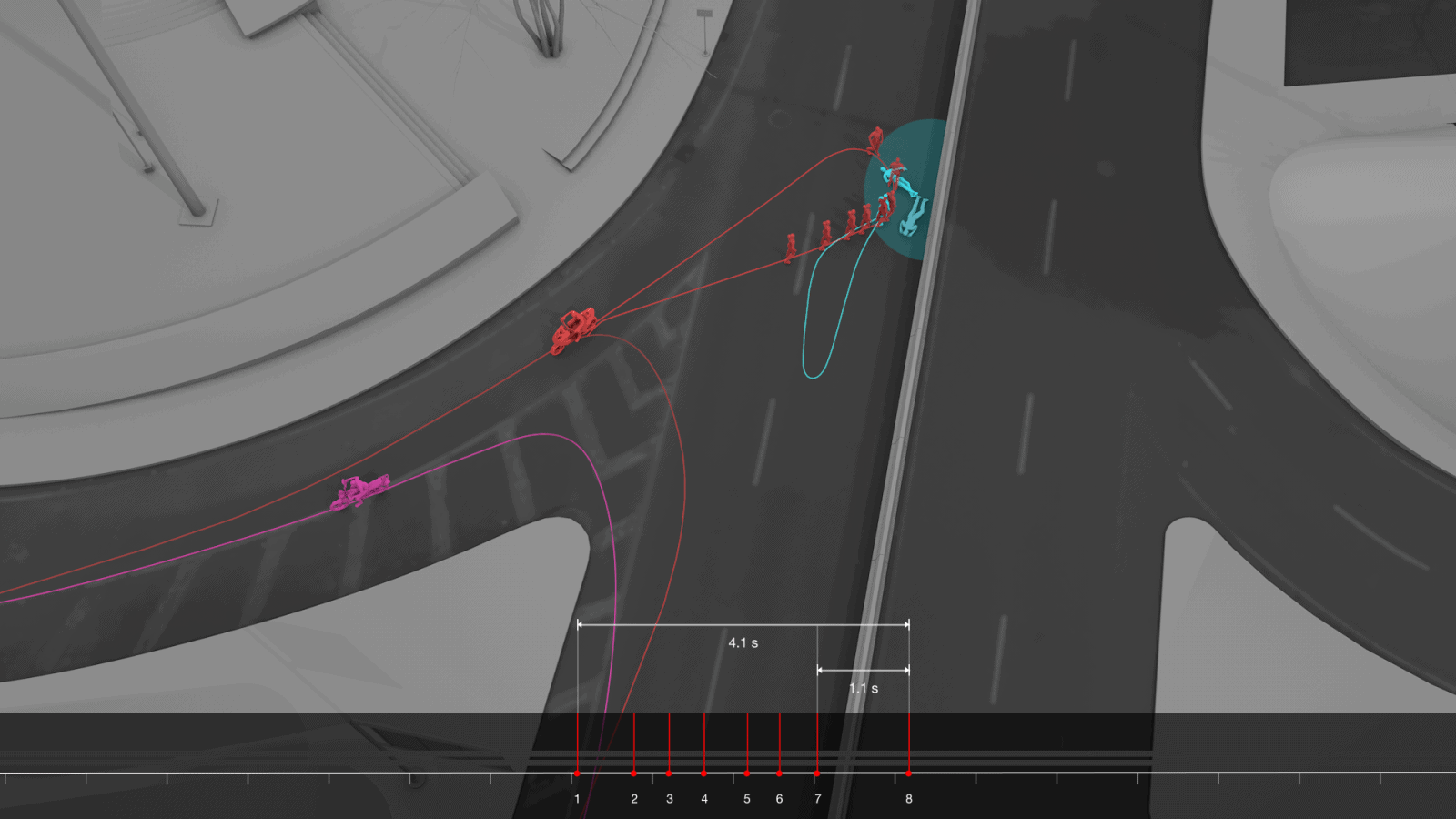
8 shots were fired in four seconds with more than a second between the 7th and 8th shot. The delay between the 7th and 8th shot suggests the last shot could have been fired to confirm the desired target was hit.
Autopsy
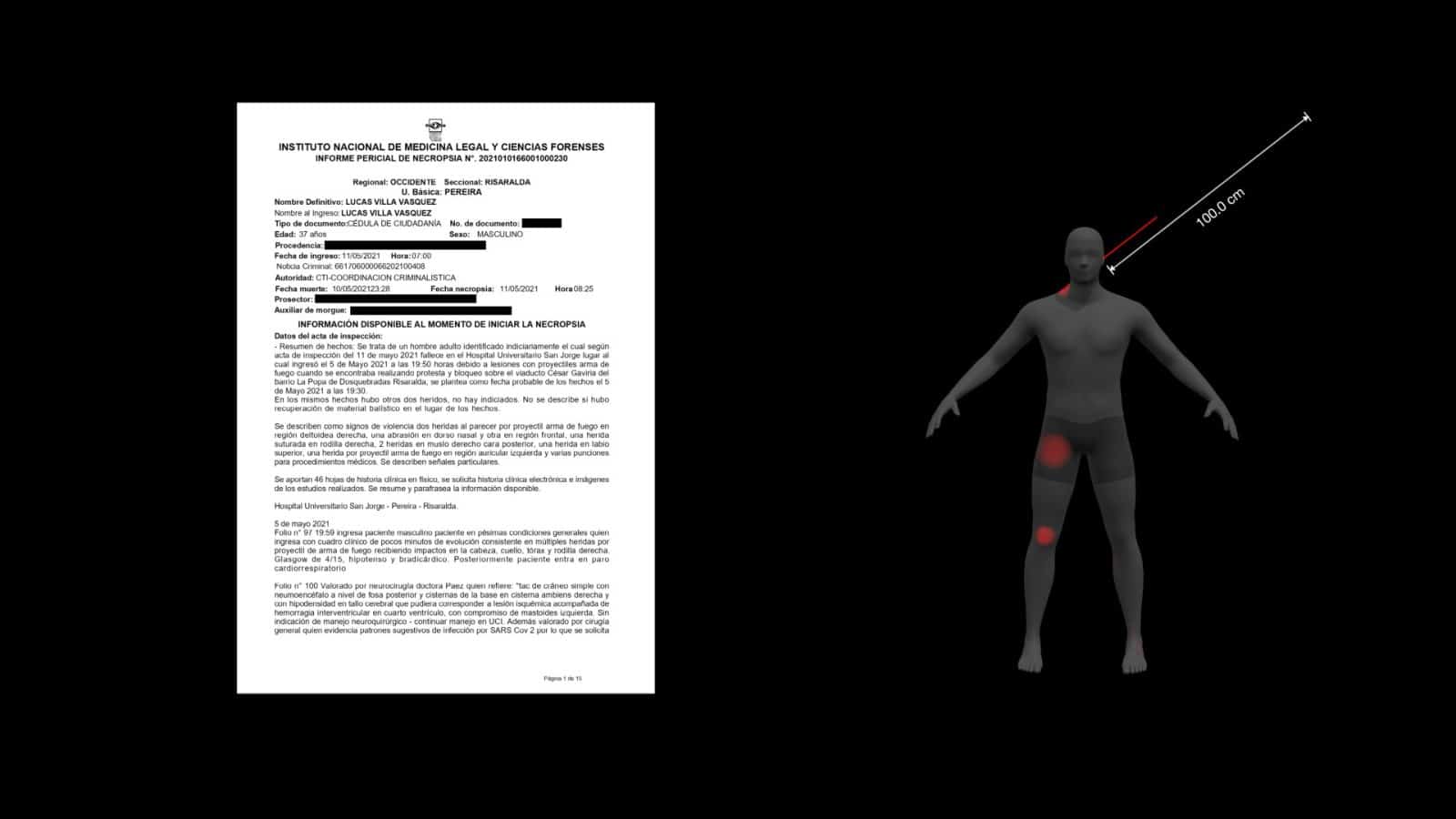
Using the official autopsy report, we reconstructed the angle and direction of the three shots that wounded Lucas. The shot which likely killed Lucas entered through his left ear and exited at the right side of his neck before re-entering his body.
The autopsy indicates that tattooing occurred around this gunshot wound. Tattooing is an abrasion or burn mark that appears when a gun is fired less than a metre from the victim’s skin.
The angle of this shot suggests that Lucas may have been bending, falling or already on the ground when it was fired, while the tattooing suggests that he was shot at close range—possibly in the style of an execution shot.
Conclusion
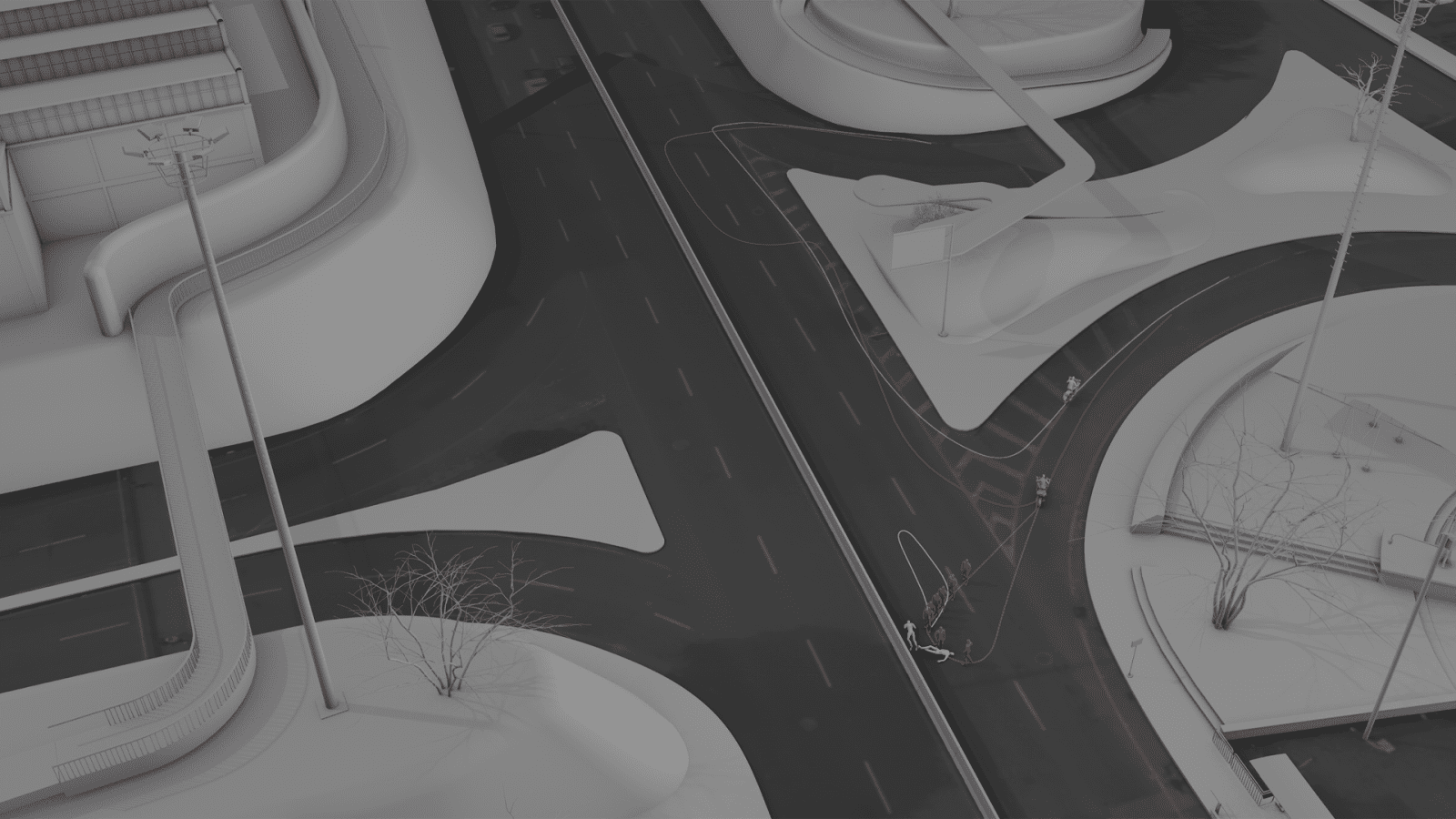
The murder of Lucas Villa created a climate of fear among the students and young people protesting in Pereira.
Further evidence, including surrounding security footage that could have captured important details should be made public by police and state prosecutors for a fair and transparent investigation.
To date, the police and state prosecutors have failed to meaningfully investigate Lucas’ murder. This, together with Colombia’s long history of collusion between criminal organisations and corrupt state agents raises doubts about whether the police and state prosecutors have a legitimate interest in investigating Lucas Villa’s murder and finding and holding to account those responsible.
‘Our analysis shows the continuity of political violence after the peace accords. The murder of Lucas points to a reorganisation of the practices of assassination, surveillance, and intimidation of those who vocalise critique of the Colombian government.
This was evident during the national strike, but also in the ongoing and rising assassinations of social leaders in recent years. Lucas’ murder is emblematic of larger and broader practices of militarisation, police brutality, and repression throughout Colombia.’
—Hannah Meszaros Martin, Researcher in Charge, Forensic Architecture